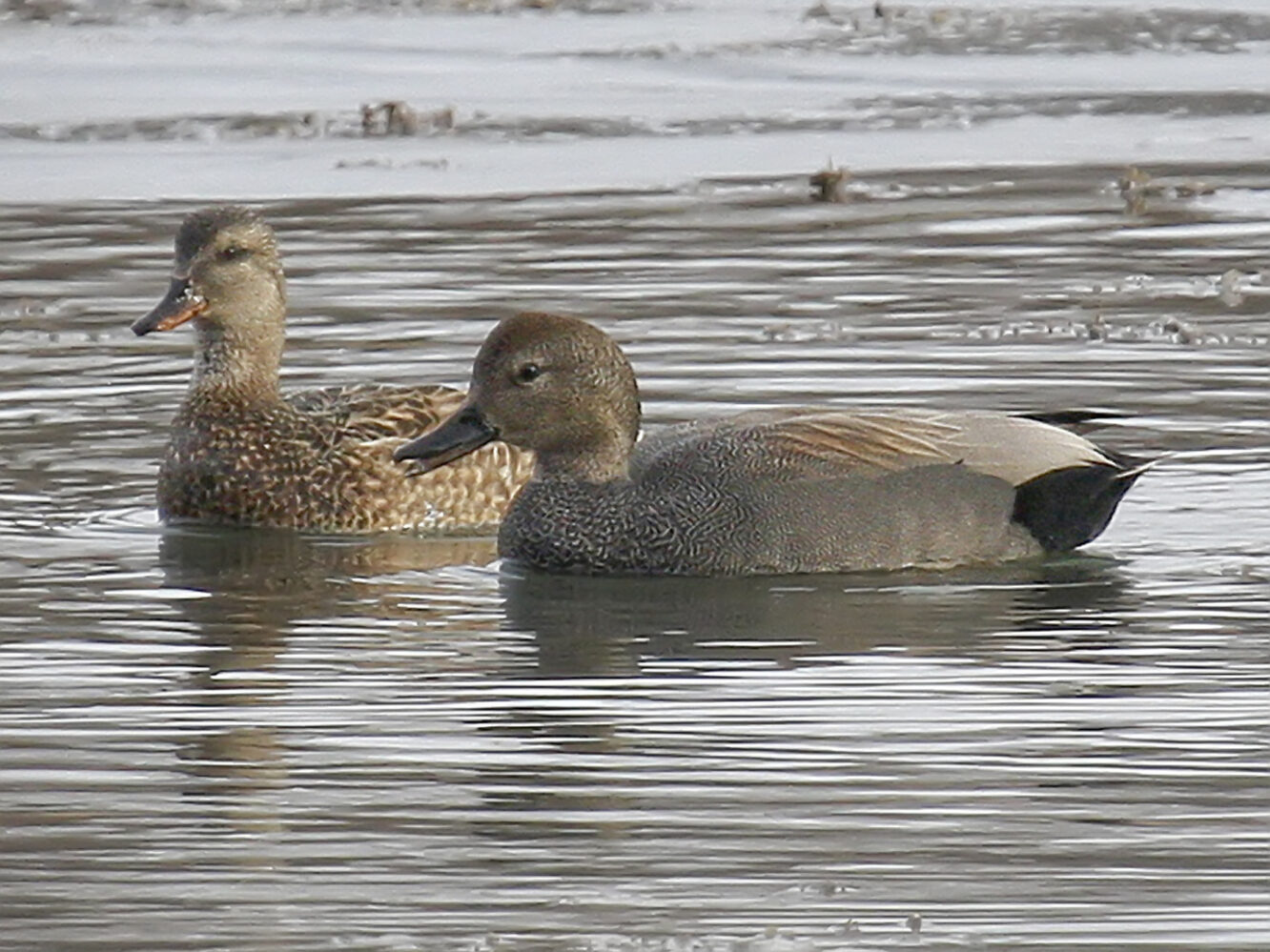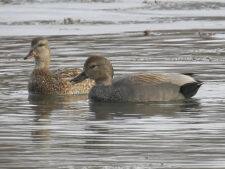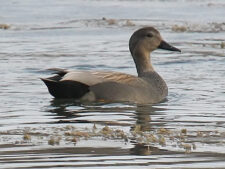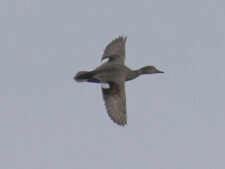
20 inches long with a wingspan of 33 inches. The Gadwall is a medium-sized dabbling duck with a steep forehead. There is a pale chestnut colored patch on the upper forewing. The white speculum is often visible while swimming. The breeding male has a black bill, brown head, and gray body. It has a gray and brown breast, back, and wing. The rump is black and the belly is white. Breeding plumage is worn from fall to early summer. The female has a gray bill with orange edges. She has mottled gray, brown, and white body plumage with a white belly.
The Gadwall is a common migrant in the Omaha and can be common in the Forest in the Great Marsh or flying over the floodplain. The best times are March and April and again in October and November.
The Gadwall is often found with American Wigeons. It is usually shy and wary. It nests on the ground near water and generally swims in pairs or in small groups as it dabbles for aquatic vegetation. Droughts in the prairie region led to a severe population decline but it has since recovered to record levels. Females have a more nasal “quack” than Mallards. Males make a “quack” and a shrill whistling sound.
Disclaimer: The content of NatureSearch is provided by dedicated volunteer Naturalists of Fontenelle Forest who strive to provide the most accurate information available. Contributors of the images retain their copyrights. The point of contact for this page is: Phil Swanson.




